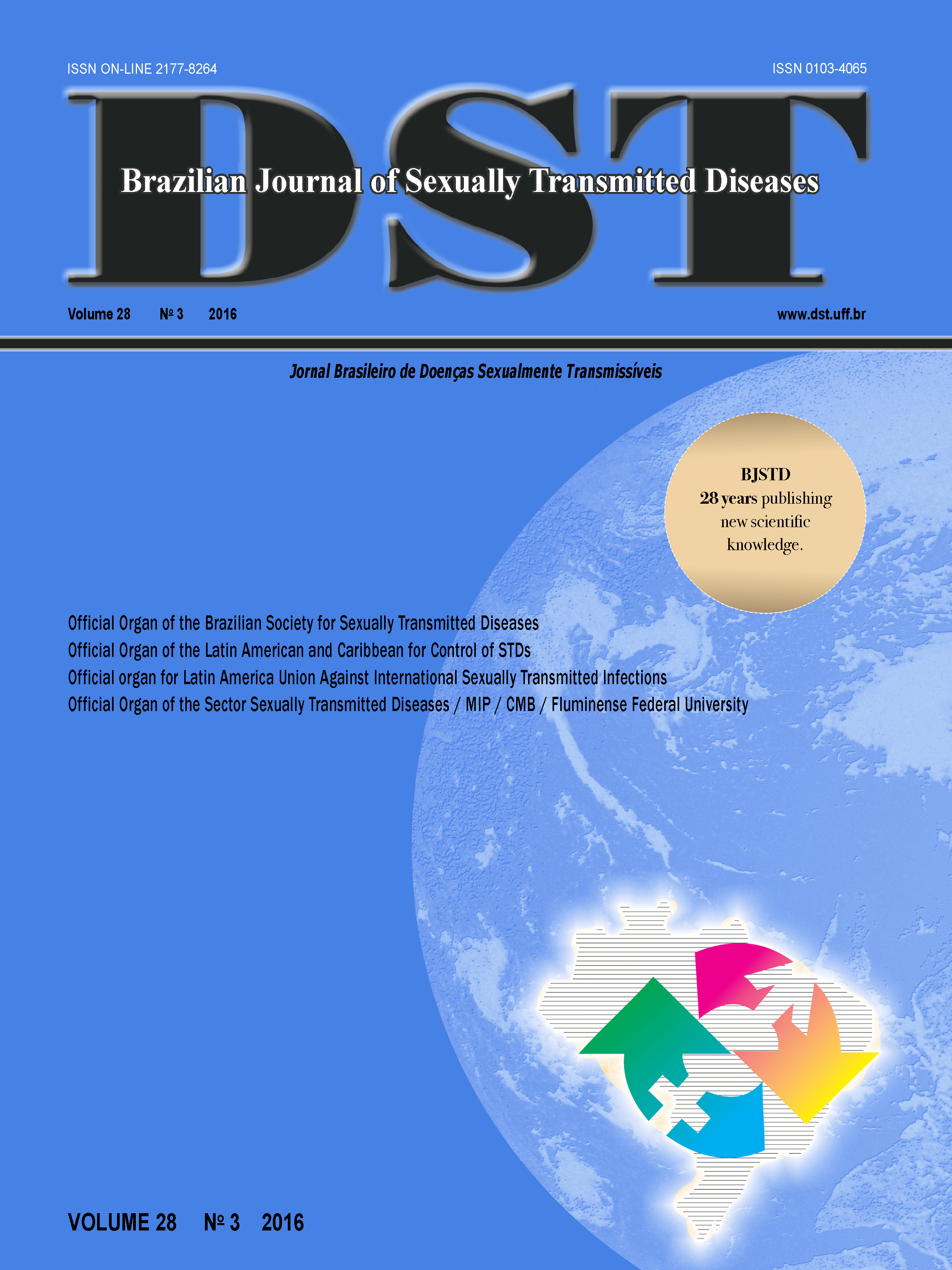Prevalence of dyslipidemias in antiretroviral therapy patients served in a specialized care service in Cuiabá (MT)
Keywords:
AIDS, antiretroviral agents, DyslipidemiasAbstract
Introduction: Although associated with improved quality of life for people with human immunodeficiency virus (HIV), the antiretroviral therapy (ART) has brought changes in cardiovascular manifestations. Antiretroviral therapy has been related with dyslipidemia, insulin resistance and diabetes mellitus, which constitute risk factors for cardiovascular disease. Objective: This study aimed at determining the prevalence of dyslipidemia in patients with HIV/ acquired immunodeficiency syndrome (AIDS) treated at the specialized care center in Cuiabá (MT), according to the duration of treatment, the stage of the disease and the drug used for treatment. Methods: This is a retrospective study using data collected from medical records of adult patients of both sexes, positive for HIV/AIDS treated at the specialized care center in Cuiabá. To collect the data, we used an instrument consisting of demographic, personal, anthropometric and biochemical data. The biochemical tests analyzed the presence of abnormal total cholesterol (TC), total triglycerides (TG) and lowdensity lipoprotein (LDL). The stage of the disease was found in accordance with CD4. Results: A total of 124 patients were evaluated, of which 54.8% were male. The most prevalent age group (50.8%) was between 40 and 60 years old. Regarding education, 36.8% reported having incomplete higher education. In terms of marital status, 40.2% declared to be married. With respect to the time of exposure to antiretroviral therapy, there was a 44.2% prevalence of dyslipidemia in patients with 1.0 to 4.9 years of treatment. Concerning the stage of the disease, the prevalence of dyslipidemia was found in 53.4% of patients in the early stage (CD4≥500 cells/uL). However, there was progressive worsening of lipid profile with the advance of the disease. About the type of drug used, 29.3% of the patients in our study used the scheme “NNRTI + 2ITRN.” Conclusion: The risk of dyslipidemia may increase with the time of treatment, the severity of the disease and the type of drug used in therapy.












